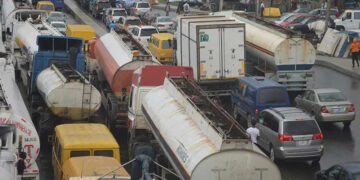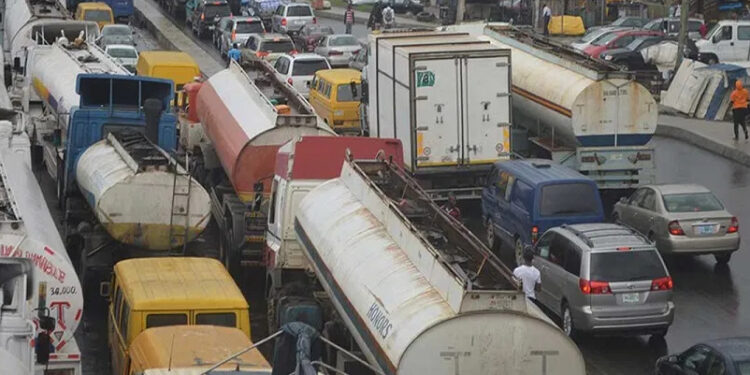The tightened gridlock at the Nigerian Ports has become severe to the point that it allegedly costs more than $4,000 to truck a container 20km to the Nigerian mainland in recent times, a charge which is almost as much as it costs to ship one 12,000 nautical miles from China.
According to reports by the Financial Times of London titled, ‘Nigeria’s port crisis: the $4,000 charge to carry goods across Lagos, The dysfunction in Lagos is allowing other West African ports, servicing far smaller markets, to eclipse Nigeria.
The impact of the gridlock extends beyond monetary costs, as freight companies and operators have to wait more than a month off the coast before they can offload their goods in the port – roughly how long they spend in transit to Lagos from China.
The business newspaper stated that congestion, bribery and storage costs add to problems for importers in Nigeria.
A long-running crisis at the Apapa and Tin Can Island ports, the main commercial entry points into Africa’s largest economy, has been exacerbated by the pandemic-induced economic slump and recent unrest in Nigeria’s commercial capital.
Dozens of ships idle at sea, while hundreds of trucks sit in traffic for days or weeks waiting to enter and exit the port. “During the pandemic, there was a lockdown and then curfews, so dock labour couldn’t resume work as scheduled. That lowered productivity and extended the long stays of the vessels,” said Otunba Kunle Folarin, chairman of the Nigerian Ports Consultative Council.
It is important to know that the port’s capacity has not increased since 1997, even as Lagos’s population has roughly tripled. Nigeria imports a lot of raw materials and almost all finished goods, and the congestion is causing production delays for multinationals.
With the port area even more crowded at the busy year-end period, the Seaport Terminal Operators Association estimates that the congestion costs the country $55m a day in lost economic activity.
About 60km east of Lagos, the Singaporean food company Tolaram and China Harbour Engineering Company are building a $1.5bn deep seaport. But it is not expected to be completed until 2022. In the meantime, the dysfunction in Lagos is allowing other west African ports, servicing far smaller markets, to eclipse Nigeria.
Lome, in Togo, is now the region’s busiest port, and cargo destined for Nigeria is increasingly offloaded or shipped via smaller vessels from ports in Ghana, Ivory Coast, Cameroon and Congo-Brazzaville. “Nigeria is definitely behind the curve,” said Darron Wadey, senior analyst at Dynamar. “What you’re seeing in Lagos . . . I can’t recall seeing anything like it anywhere else in the world.”




































